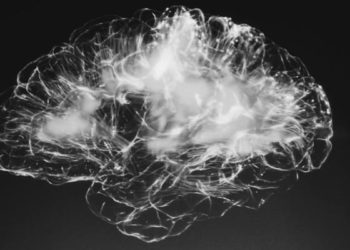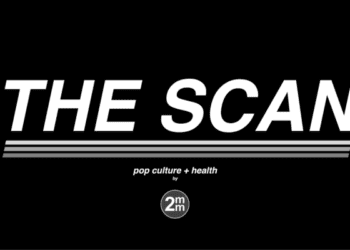The Scan by 2 Minute Medicine®: Shohei Sidelined? Blue Light Bust, Sciatica Struggles, and Concussion Effects
9-19-2023
The Scan by 2 Minute Medicine® is a pop-culture medical newsletter and exclusive benefit for 2 Minute Medicine Plus subscribers.
Shohei Sidelined?
The Story: Shohei Ohtani, the face of the Los Angeles widely considered one of the greatest two-way baseball players in recent history, is now faced with a troubling injury, the dreaded ulnar collateral ligament (UCL) tear. With this injury, Ohtani won’t be able to throw pitches but is still able to bat for his team.
What is a UCL Tear?
The UCL is a ligament on the inside of the elbow, and these injuries are often sustained by individuals engaging in throwing sports, such as baseball or javelin. Symptoms of a UCL tear include elbow stiffness and pain, as well as numbness and tingling in the 4th and 5th fingers. Treatment is variable and can range from rest and physical therapy to surgery depending on severity. Despite this elbow injury, many players opt to continue hitting, and are able to do so without serious consequences.
What happens now?
Despite the serious nature of this injury, this isn’t Ohtani’s first time dealing with such an injury. In 2018, he underwent Tommy John surgery, the colloquial name for the UCL reconstruction surgery after it was first performed on the baseball pitcher Tommy John. Ohtani returned to pitching in 2021 and has had monumental success since. Ohtani isn’t the only pitcher to have had success following a surgery like this, Justin Verlander, a Houston Astros pitcher, underwent the same surgery and emerged from it to win the Cy Young award for best pitcher in the league. Currently, Ohtani’s season is over, with an oblique tear putting an end to his hitting. One thing is for sure though, with Ohtani entering free agency this offseason, many teams will be bidding to sign him, injury or not.
Blue Light Bust:
Eye health and blue light glasses have risen in popularity in the last few years, but a new study may call this popularity into question. This study reviewed evidence from 17 clinical trials lasting from a few days to a few months and showed that wearing blue light glasses over a short-term period may not have a significant impact on improving eye strain.
The American Academy of Ophthalmology claims that there is no evidence that blue light from electronics is damaging to the eyes. They also specify that eye strain from overusing digital screens may occur due to decreased blinking, but not due to the light coming from the screens. A large source of blue light is the sun, but the use of digital screens after sunset has led to concerns about sleep disruption since blue light is a determinant of the body’s natural circadian rhythm. Lately, this has become a very important discussion due to the increasing amount of computer work.
Over 50% of people who work using computer screens have some symptoms of eye strain. Since many of the issues contributing to eye strain are related to blinking and the muscles of the eyes, solutions must focus on this. Remedies include taking breaks by looking away from the screen in line with the 20-20-20 rule, where every 20 minutes you look at something 20 feet away for 20 seconds. Blinking more often is also useful for minimizing eye strain since it keeps the eyes lubricated as necessary.
Sciatica Struggles:
During her Las Vegas residency, Adele collapsed backstage. This was due to a flare-up of her chronic condition, sciatica. Adele’s pain was so severe that she required her team to pick her up off the floor. The superstar singer is no stranger to sciatica, as her December 31, 2022 performance was marred by such severe sciatica that she had trouble walking.
Sciatica specifically refers to pain that comes from the sciatic nerve, which travels from the lower back to the buttocks and legs. It is often caused by a herniated disc and can vary in severity. Some cases of sciatica are mild and resolve with time, while other cases cause sharp, burning pain and numbness for long periods of time. Generally, treatment includes taking anti-inflammatory medications and applying heat or cold compresses. In severe cases, surgery may be required to repair the herniated disc.
Adele is not the only celebrity to have discussed their troubles with sciatica, former boxer Mike Tyson has expressed that his sciatica flare-ups are so severe that sometimes they leave him unable to talk. The legendary golfer Tiger Woods suffered from severe sciatica that impacted his ability to play golf, and eventually resulted in surgery. The surgery was so successful that Woods was able to recover and continue playing golf.
Sciatica doesn’t just affect one’s ability to play sports, in fact, it can affect one’s general quality of life. Activities such as driving, sitting, standing, and being active can all be affected by sciatica, leading to difficulty sustaining responsibilities and maintaining relationships. Experts recommend exercising, specifically strengthening the core muscles, as a way to lower one’s risk of developing sciatica. This is because strengthening these muscles reduces the chances of developing a herniated disc.
Concussion Effects:
Senate Leader Mitch McConnell appeared to freeze in front of the press, citing light-headedness, for the second time in recent weeks. While medically cleared by a physician to continue working, McConnell’s situation seems to be linked to his concussion recovery. In March 2023, McConnell suffered a fall resulting in a concussion and a fractured rib. While many believe that concussions are only sport-related, many performers have sustained concussions, including Angelina Jolie and Justin Bieber.
Symptoms of concussions can include headaches, memory problems, and light sensitivity among others. As fall approaches and students return to school and sports, it is important to stay careful to minimize the risk of concussions. Wearing helmets and safety gear when playing sports, and knowing how to identify the signs and symptoms of a concussion, are crucial in keeping the youth safe from concussions.
Repeated injuries to the head, including repeated concussions, can increase the risk of chronic traumatic encephalopathy (CTE). This is a progressive brain disease that can lead to the development of dementia. A recent study examined the brains of athletes under the age of 30 and found that around 40% of the examined brains showed early signs of CTE, even in amateur athletes. While CTE is commonly associated with football players and older adults, this study shows that it can develop in younger athletes playing sports at the sub-professional level. In late 2021, the former National Football League (NFL) wide receiver, Vincent Jackson, was diagnosed with CTE after his death at age 38.
The NFL has recognized the dangers that concussions can pose to their players, and so has developed a set of rules to evaluate a player’s suitability to return to play. Many other sports leagues have similar rules, and the CDC has a 6-step approach to evaluating an athlete’s return to competition. Even after recovery, post-concussive symptoms may persist, including dizziness or light-headedness, anxiety, and loss of concentration amongst others.
As of now, the treatment for concussion includes a period of rest, followed by gradually reintroducing activities with close guidance from a doctor. CTE currently has no known treatment, and can only be officially diagnosed upon autopsy. These factors make it vital to maximize prevention and take great care to minimize the risk of head injuries.
©2023 2 Minute Medicine, Inc. All rights reserved. No works may be reproduced without expressed written consent from 2 Minute Medicine, Inc. Inquire about licensing here. No article should be construed as medical advice and is not intended as such by the authors or by 2 Minute Medicine, Inc









